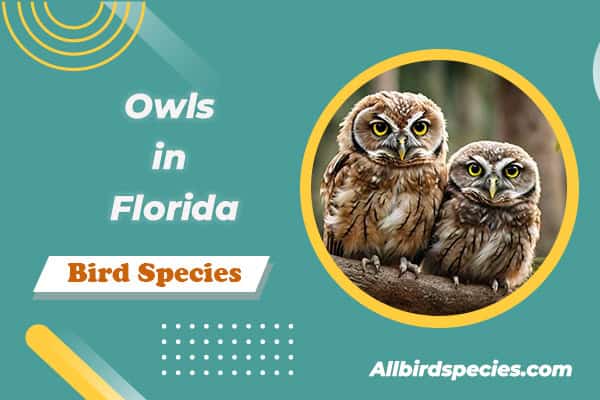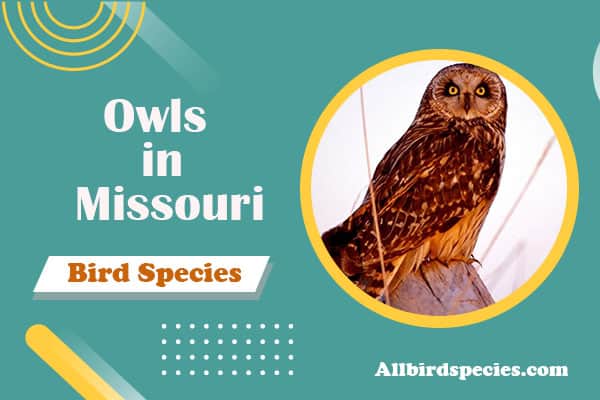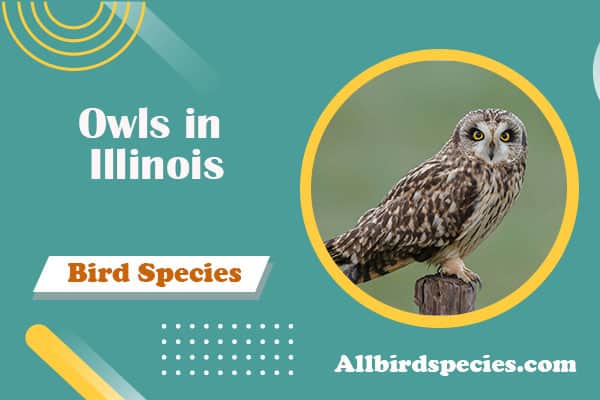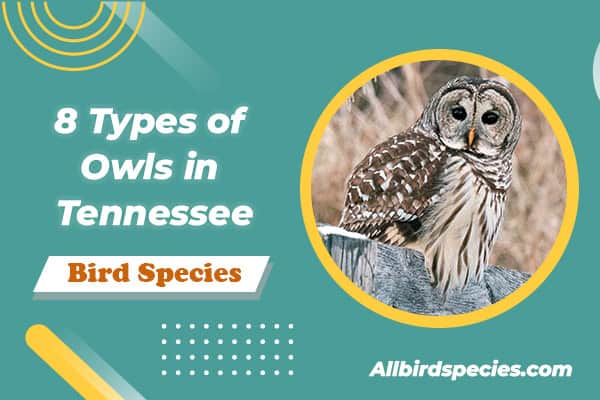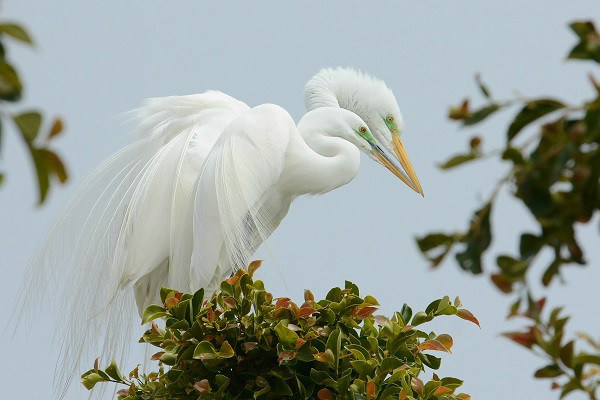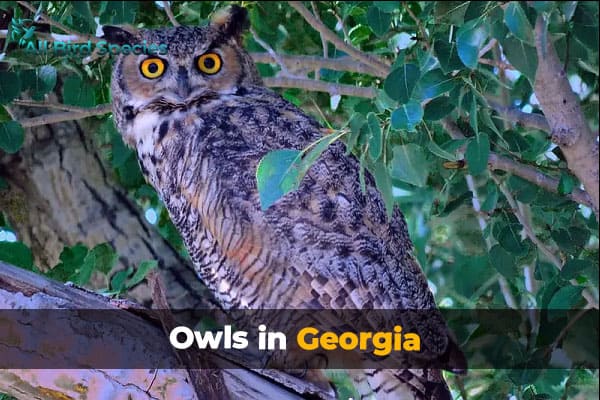8 Types Of Owls Found in Florida (With Photos)
Have you ever thought about the different types of owls in Florida? The Sunshine State is full of these interesting birds. It’s because of the many places they can call home. From the mighty Great Horned Owl to the mysterious Short-eared Owl, Florida has many owl kinds. Each one is special and has its way of acting. Let’s learn more about owls in Florida. We’ll check out the 8 kinds of Florida owls you might see in this area.
Introduction to Owls in Florida
Florida has a lot of different wildlife, making it perfect for many owl types. The state’s mix of habitats, from lush forests to coastal areas, offers great spots for them. The warm weather means owls can live in Florida all year. Some owls come just for the winter, looking for food and homes.
What Makes Florida an Ideal Habitat for Owls?
The Everglades and the Apalachicola National Forest are big and safe places for owls. Different habitats mean more kinds of food for owls to eat. This makes Florida a great place for owls to grow in number.
The Diverse Ecosystems of Florida Supporting Owl Life
- Lush, dense forests see the Great Horned Owl and Barred Owl find homes and food.
- Places like the Everglades are home to Barn Owls and Burrowing Owls. They do well in these areas.
- Open grasslands are ideal for the Eastern Screech Owl and Burrowing Owl to look for their next meal.
- Coastal spots attract owls like the Barn Owl and Short-eared Owl. They enjoy the mix of lands and beaches.
Florida’s many habitats and warm climate are perfect for owls. Its nature is a home to many different birds and animals, showing how important it is to protect these places.
Identifying Characteristics and Behaviors of Owls
Owls are amazing creatures of the night. They have excellent night vision, fly quietly, and hear very well. This helps them hunt at night. They have big eyes, soft wings, and a special body that helps them find and catch prey perfectly.
Nocturnal Hunters and Their Adaptations
Owls mostly come alive at night, although some are active at other times. They have special tools for hunting in the dark, including:
- Big, front-facing eyes that help them see in 3D
- Feathers that are soft like velvet to fly without making noise
- One ear is higher than the other and shaped to help them hear better
- A toe that can point either forward or backward to catch prey
- They have great eyes and ears to find and follow small animals and bugs
These tools make owls great at hunting at night. This lets them live in many places all over the world.
Owl Calls and Vocalizations
Owls speak in many different ways. They make sounds to talk, defend their space, and find mates. You might hear:
- Deep hoots for talking far away
- High screeches when they’re mad or worried
- Wavering tremolos during love and to stay close to their mate
- Harsh barks to say they are not happy or to mark their place
Knowing owl sounds can help you spot different types of owls. You can see how they act in nature.
Owls are built to rule the night because of how they are made and act. Learning about their ways of hunting and talking can make you admire these mysterious creatures. You also get better at finding them in the wild.
1. Great Horned Owl
The great horned owl is one of North America’s most iconic owls. It’s known for its tufted “horns” and mixed brown and gray feathers. This large bird is a powerful hunter and a common sight, even in Florida.
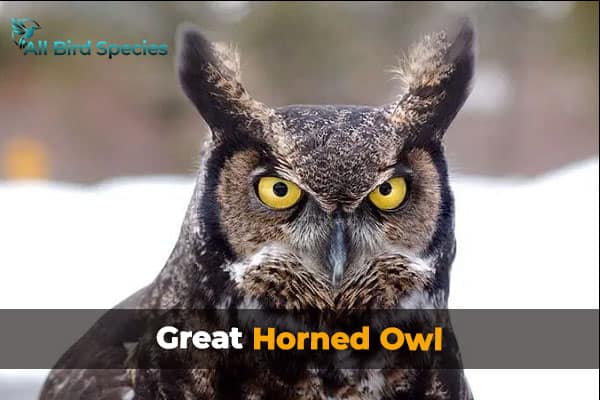
Physical Description and Range
It’s one of the largest owl types, with a wingspan reaching 60.5 inches. Females are bigger than males. Their feathers mix browns, grays, and whites, helping them blend well into nature.
Habitat and Nesting Behavior
Great horned owls live in various places, including forests and cities. They use tree cavities or old nests for their young. They normally lay one or two eggs which take about 33 days to hatch.
The baby owls, or owlets, stay in the nest for 5-6 weeks before they fly.
Hunting Techniques and Prey
This owl is a strong hunter, catching prey like rabbits and small birds. It uses its sharp claws and strong beak to hunt. Even prey larger than itself is not a challenge.
“The great horned owl is one of the most common owls in North America, and its haunting calls can often be heard throughout the night in many areas.”
2. Eastern Screech Owl
The Eastern Screech Owl is a small yet fascinating owl. It lives in the eastern United States, even in Florida. This owl is famous for its looks. It can be either gray or reddish-brown. These colors help it hide in trees and holes. You might spot one in Florida’s woods or parks.

Color Morphs and Physical Features
This owl has varied feathers, from gray to reddish-brown. The patterns on their feathers keep them hidden. In places like southern Texas and northern Mexico, you find a gray form called McCall’s. The red version, Northern, is a brighter red with dark lines. When young, they are gray and fluffy with bars on their feathers.
They are known for being short and solid. Bigger than a Starling but smaller than a robin. Their wings stretch 18 to 24 inches. They can be 4 to 8 ounces heavy. The oldest one known lived 14 years.
Urban Adaptation and Nesting Sites
The Eastern Screech Owl is good at living near people. They pick tree holes or even birdhouses to live in, seen often near people’s homes. For example, in a gated community, two owlets were found by the von Arx Wildlife Hospital. This shows how they adapt to living alongside us.
Eastern Screech Owls make unique calls during the breeding season. They are known for their trilling or whinnying sounds. Their ability to blend in, small size, and city life make them a hit in Florida. Nature lovers are thrilled to find them in the state.
3. Burrowing Owl
Florida is home to many owls, but the burrowing owl is special. It chooses to live in open areas like grasslands and deserts. This owl is small, only 9 inches long, with long legs and a 21-inch wingspan.

Unique Nesting Habits
The burrowing owl is different from other owls. It doesn’t nest in trees. Instead, it likes underground homes. They use burrows made by animals like ground squirrels.
Between February 15 and July 10, female burrowing owls can lay up to 8 eggs a week. These eggs hatch after 28 days. The young owls stay in the burrow for two weeks, then start to fly after four weeks. By 12 weeks, they’re ready to go off on their own.
Diurnal Activity and Defensive Behaviors
In Florida, burrowing owls are active both day and night. It’s unusual for owls to be this active in daylight. They do this a lot while raising their young.
If they feel threatened, these owls have interesting ways to keep safe. They can sound like a rattlesnake to scare off animals that might harm them or their nests.
The burrowing owl is important to Florida’s ecosystem. It shows us how these birds have adapted to see the world in unique ways. Their behaviors are fascinating to study.
| Burrowing Owl Statistics | Value |
|---|---|
| Length | 9 inches |
| Wingspan | 21 inches |
| Breeding Season | February 15 to July 10 |
| Eggs Laid | Up to 8 per clutch |
| Incubation Period | 28 days |
| Time to Fledge | 12 weeks |
| Weight | 6 ounces |
| Lifespan | 6-8 years |
“The burrowing owl is a truly remarkable bird, with its underground nests and unique defensive behaviors. It’s a privilege to witness these owls thriving in Florida’s diverse ecosystems.”
Owls in Florida
In Florida, several owl species live year-round. But, there are also seasonal visitors and migratory owls. For example, Short-eared Owls and Long-eared Owls visit during winter as they fly south from their breeding sites. The Snowy Owl, however, shows up now and then, especially in irruption years when its numbers increase suddenly. Knowing about these seasonal movements and migratory patterns can make owl-watching in Florida better for bird lovers and nature fans.
Seasonal Visitors and Migratory Patterns
Some owl species in Florida are just seasonal visitors. They come at certain times of the year. Let’s take a closer look at some of these seasonal owls:
- Short-eared Owls and Long-eared Owls are more commonly observed in Florida during the winter months as they migrate south from their breeding grounds.
- Snowy Owls may make occasional appearances in the state during irruption years when their populations surge, though sightings are rare, with only one reported in the past 10 years.
- The Burrowing Owl is mainly spotted in Southern Florida, and it is one of the smallest owl species found in the state.
Learning about seasonal movements and migratory patterns of owls in Florida is key for those wanting to see these interesting birds. It helps in planning owl-watching trips.
Florida is a key place for bird migration, with over 589 species using it as home or for a rest. To enhance the birdwatching experience, knowing the right times and places to see seasonal owls is crucial.
| Owl Species | Seasonal Presence in Florida |
|---|---|
| Short-eared Owl | More commonly observed in Florida during the winter months |
| Long-eared Owl | More commonly observed in Florida during the winter months |
| Snowy Owl | Occasional appearances during irruption years, with one sighting in the past 10 years |
| Burrowing Owl | Mainly spotted in Southern Florida, one of the smallest owl species in the state |
Keeping up with the seasonal movements and migratory patterns of owls in Florida helps in planning birdwatching trips. It increases the chance of seeing these amazing birds in their natural surroundings.
4. Barred Owl
The barred owl is a fascinating bird of prey found in Florida’s lush woods. It’s famous for its call, sounding like “Who cooks for you? Who cooks for you all?” This owl uses its varied sounds to talk with others and protect its space.
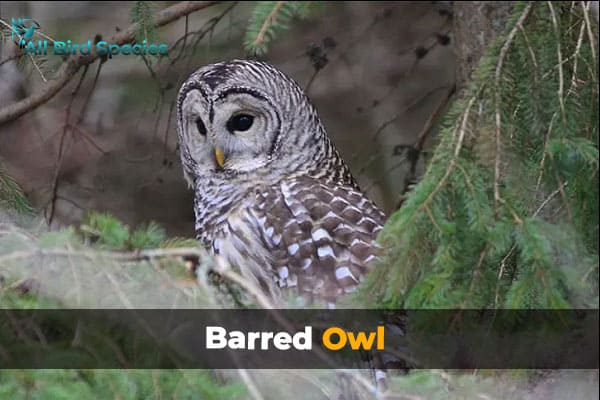
Vocal Repertoire and Distinctive Calls
Barred owls have a lot of different sounds, such as hoots and screeches. The “who cooks for you?” cry is well-known in Florida’s forests at night. It helps them mark their territory, find a partner, and plan to raise their young.
Habitat Preferences and Diet
These owls like living in big, old forests, where they make their nests in tree holes. They eat various small animals, like mammals, birds, and frogs. Barred owls can also thrive in areas with more open space, not just dense forests.
Compared to other owls, barred owls are midway in size, about as big as a crow. They usually live in pairs, looking after their home and babies together. Both the males and females help out equally.
With their strong features and striped feathers, barred owls are hard to miss in Florida. They are crucial predators, keeping their homes balanced. Their presence shows a healthy ecosystem.
“The Barred Owl’s haunting call, echoing through the night, is a testament to the wild beauty of Florida’s forests and the wonder of these captivating raptors.”
5. Barn Owl
The barn owl is an enchanting member of the owl family. It’s known for its eerie look and quiet flight like a moth. With its distinct heart-shaped face and almost white feathers, it’s hard to spot at night. This makes it a stealthy night hunter.

Ghostly Appearance and Silent Flight
This owl is captivating due to its looks and hunting abilities. Its special feathers let it fly without making a sound. This means the barn owl can sneak up on its dinner quiet as a ghost. It uses its amazing sight and hearing to find food at night.
Nesting Sites and Prey
Barn owls can live in many places, from trees to barns to church towers. They go after small critters in open spaces like fields and marshes. Owls eat lots of rodents, helping keep farms in Florida free of pests.
Barn owls are mysterious and skilled hunters, inspiring people worldwide. As we study them more, we see how they keep our world in balance. They’re key to a healthy environment and farming that doesn’t harm nature.
“Barn owls are truly remarkable creatures, with their silent flight and exceptional hunting prowess. They are a testament to the beauty and wonder of the natural world.”
Read Our Previous Articles:
Conclusion
Florida’s diverse ecosystems are home to many owl species. From the famous Great Horned Owl to the shy Burrowing Owl, each owl has a special role. Knowing about their unique traits and where they live helps birdwatchers and fans of nature understand them better.
Exploring Florida’s wild places or watching owls in your yard is amazing. These birds show us the rich life found in Florida. Whether we hear the Barred Owl’s eerie call or see the Barn Owl glide in silence, they are key to a flourishing ecosystem.
Florida is a top spot for people who love birdwatching and nature. So, protecting where the owls live is very important. Getting involved in saving their homes and keeping an eye out for them keeps owls in Florida safe for the future.

